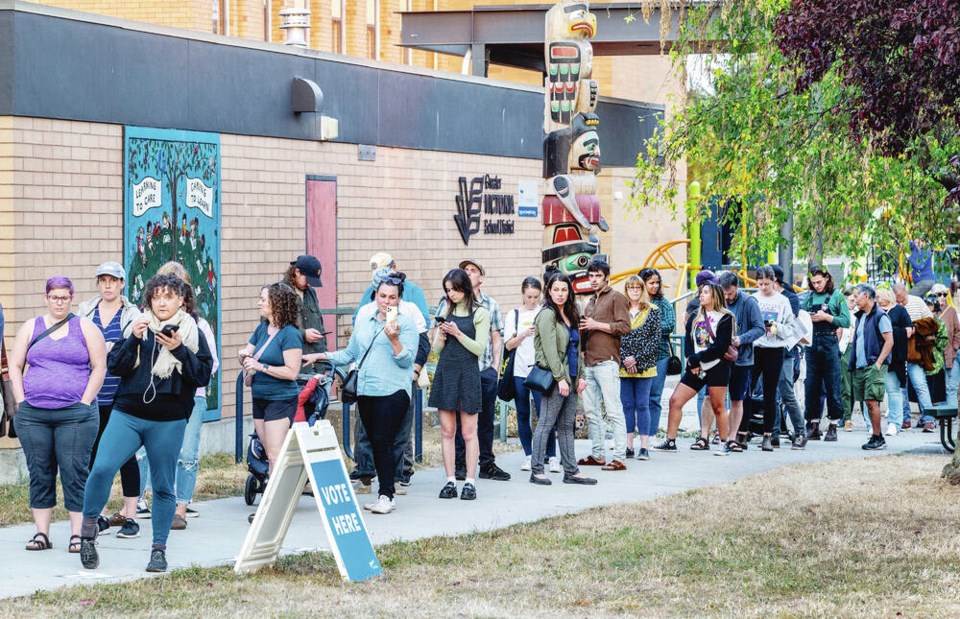The City of Victoria wants to change the way municipal elections are run and will be asking the province to work on improving voter turnout and expanding where election canvassers can go.
It wants the province to consider offering tax credits to those who donate to municipal campaigns, the same way donors get credits in the federal and provincial arena.
Turnout for last year’s municipal election was around 38 per cent in Victoria — a significant drop from the 43.5 per cent turnout in 2018.
With the aim of encouraging higher voter turnout, council last week directed city staff to reserve the Victoria Conference Centre as a key polling station for 2026 to reduce long lines and wait times. It also approved having at least eight general voting-day locations, at least two advance voting locations and four advance voting days.
Coun. Dave Thompson identified three areas where he would like to see the province take action, including giving election canvassers better access to multi-family buildings, getting rid of election signs and encouraging more young people and renters to vote.
He noted that 61 per cent of Victoria residents are renters. “If the majority of our residents are under-represented at the polls, we have a serious problem with democracy,” he said.
As for election canvassers, he noted that federal and provincial canvassers have greater access to multi-family buildings than those in municipal elections. “Which may partly explain why we have low turnouts for municipal election campaigns,” he said.
Thompson noted that the rules for canvassers during a municipal campaign are set out in the Residential Tenancy Act and state that a landlord cannot unreasonably restrict access to a residential property. However, he noted that rule only seems to apply to rental properties and not multi-family strata complexes.
The rules are less restrictive at the provincial and federal levels.
According to Elections B.C., canvassers have access to all multi-family buildings between 9 a.m. and 9 p.m. during the campaign period.
Elections Canada notes candidates and their representatives have rights of access to apartment, condominium and other multiple-residence buildings, including gated communities. The only exceptions are when the person in control of the building determines canvassing or campaigning could harm the residents’ physical or emotional well-being.
Thompson also pushed for the city to advocate to the province to get rid of election signs. “There are better ways in the information age for us to inform people about the existence of municipal elections than using a tonne of signs all around the city and making a mess,” he said.
Some of his council colleagues, however, opposed the idea of getting rid of signs, suggesting enhancing other modes of informing citizens of municipal elections.
According to Elections B.C., local governments can regulate the size, placement, maintenance and removal of election signs.
Coun Stephen Hammond pushed for the tax credits for municipal campaign donors, saying the inequity at the municipal level had been a bee in his bonnet.
>>> To comment on this article, write a letter to the editor: [email protected]



